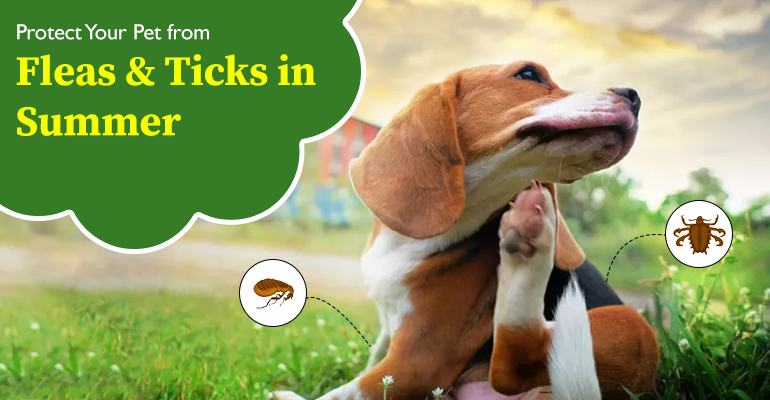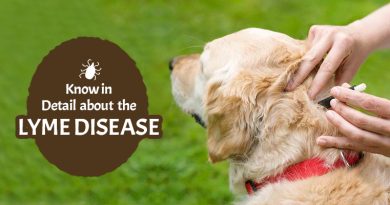Protect Your Pet from Fleas & Ticks in Summer
Scary thought: You are cuddling with your furry BFF, watching your favorite TV show on a fine summer morning while admiring every soft touch of his lustrous coat, and bam! You just spotted a flea feasting on your dog’s blood.
You shockingly rummage through your dog’s locks, and it even gets scarier. You just spot another one, and one more. It’s an entire flea infestation!!!
Getting back to reality, thankfully, this unfortunate event was just a thought and no pet parent would ever want it to come true. Because, we know that flea and tick problems in dogs is a headache to deal with.
Fleas and ticks are highly active during summer. The mild temperatures and increased humidity in the summer provide ideal conditions for these buggers to thrive. Plus, when the days are hot, there are more chances of your pet going outdoors, where these problem parasites reside.
So, what can a pet parent do to avoid these mighty foes? The answer is clear and simple: take appropriate measures to prevent them. Here, we will discuss why fleas and ticks are dangerous for your pet and what measures you can take to prevent them when the temperature scale goes up. So, without any further delays, let’s dive in.
Fleas and ticks are dangerous pet parasites. Adult fleas feed on your pet’s blood, causing irritation, itching, and scratching. They can also transmit other parasites, like tapeworms. On the other hand, ticks take in large amounts of your dog’s blood and may lead to health conditions like anemia. Ticks can spread a number of diseases, like Lyme disease, Ehrlichiosis, Babesiosis, Tularemia, Hepatozoonosis, Rocky Mountain Spotted Fever, and more.
Preventing Fleas & Ticks on Pets
We asked a veterinary professional in Florida to recommend ways to control fleas and ticks on pets and in the house. “The best way is to use an effective flea and tick prevention treatment year-round,” he advised.
Flea and tick treatments come in various forms, such as chewables, topicals, sprays, and powders. He added that pet parents must consult their veterinarian to find the most suitable treatment, as per the pet’s size, weight, health status, lifestyle, and the prevalence of types of parasites in their area.
Additional control measures include keeping your surroundings free from fleas and ticks. You can do this by vacuuming your floors, upholstery, and furniture every day; washing bed linens and pet beds in hot water every week; mowing your lawns regularly; and using barriers like gravel or wood chips between your lawn and wooded areas to inhibit parasite migration into your yard.
Regular veterinary checks are important above all. Despite all these measures, it is essential to take your pet to the veterinarian at regular intervals. A vet will be able to better spot any fleas or ticks on your pet’s coat or any other underlying condition that may be prevailing underneath to deteriorate your pet’s health condition.
Remember, along with the temperature, the population of fleas and ticks also goes up in the summer. Therefore, it is important to take these control measures to cut your pet’s flea and tick risk before it’s too late.
Be vigilant for the presence of these parasites and adopt a comprehensive flea and tick control strategy to ensure that these maddening buggers stay out of your pet’s business. Do visit our website Budgetvetcare.com, if you are looking for flea and tick preventatives at affordable prices. Enjoy a parasite-free summer with your furry friends, you all!




